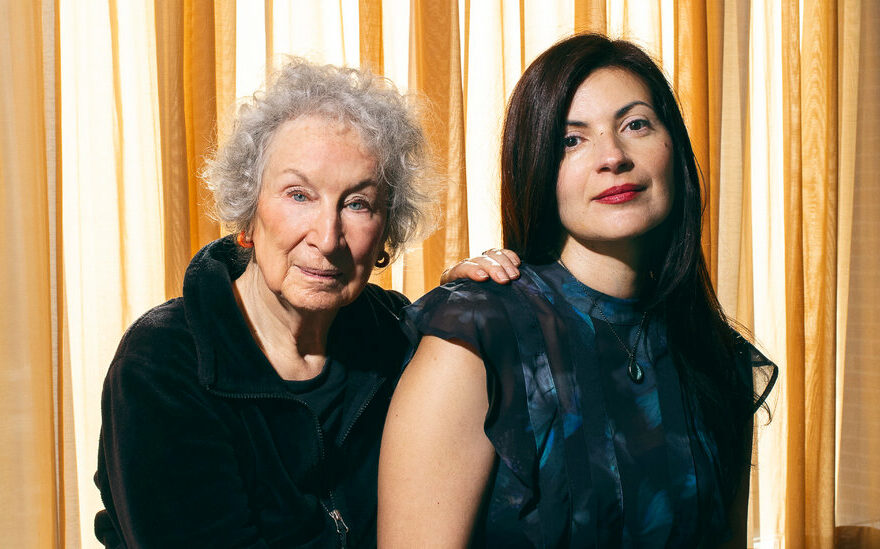Margaret Atwood: I’ve been an admirer of Mona’s novel “Bunny” (2019) for some time. It’s a form of Gothic satire, and she sets it at a writing school. It’s very funny, kind of horrifying and quite far outside the lines. You think, “She’s not going to go there … yes, she is.”
Ideas about writers were so thin on the ground when I decided to be one. I was talking to somebody else about this recently and said, “People like you and me went into it out of ignorance.” And she said, “Had I only known, I never would have!” It was kind of like walking across Niagara Falls blindfolded without knowing it. And then people would say, as they did in my presence, “Well, of course women can’t write.” This was the mid-60s. Luckily, I was in Canada, and Canadian writers were so bottom of the heap they were willing to become friends with anybody, even if they were female. So writers of my generation in Canada were making it up as we went. We made up small publishing companies. We made up little magazines. We made up writers’ organizations. Because few of those things existed. Creativity moves in to fill a vacuum.
If I were going to give a workshop, it would be on dealing with negative criticism. I’m in the habit of telling first-time novelists who’ve had some success, “Within one year, you’ll receive three vicious personal attacks from people you don’t know, and your friends will divide like the Red Sea, with one half not being able to stand your success and the other celebrating it. It’s not personal.” Also, reviews are reviews. They’re written by individual people, not God. You might learn some things about the book you’ve already written, but once you’ve published a book, unless you’re really a cheater, you don’t change it.
culture banner
Mona Awad: I first experienced Margaret’s work in high school, when I read “Surfacing” (1972). I loved how wild it was — and it was Canadian, which was exciting to me as someone from Montreal. All her early novels are so Gothic and strange. She was playing with so many different story traditions. My book “Bunny” owes a lot to her in that respect.
After “Bunny” came out, Margaret tweeted about it. I was shocked. Then, when the paperback was released, she agreed to do a virtual event with me on Zoom. We hadn’t met in person, though, until the shoot for this story. The photographer had to tell us to stop talking, and Margaret said, “Now we must be quiet as mice.” Later on, she read my palms. Weirdly, she told me to turn my mirror toward the wall to deflect envy, having no idea that my next book, “Rouge,” is all about envy and mirrors, and has a character who does just that. She also told me to say “[expletive] it” more.
The more I have my work published, the more I trust the unconscious and value the writing time that’s private — that time alone in the dark with it. That feels like the most sacred thing, and I really try to protect it. When I was working on “Bunny,” I would ask myself — and I think this is a good test — “Even if this doesn’t get published, do you still want to finish it?” The answer was always yes.
Interviews have been edited and condensed.
legends & heirs footer





























Source: Read Full Article












